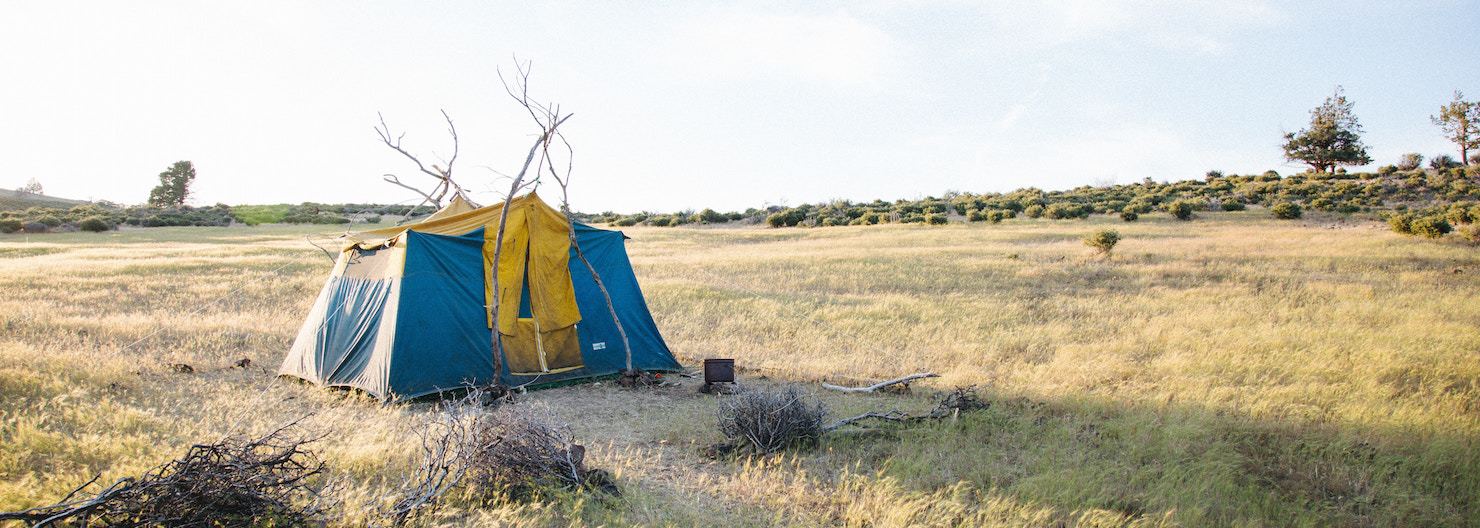
We're about keeping you prepared. From wallets to backpacks to phone cases, we help you carry what you need to stay ready for whatever comes your way. And in this case? Maybe it's the need for an impromptu shelter.
There are plenty of reasons why knowing how to build a proper emergency shelter is a necessity; namely, it’ll come in clutch when you're in need of something over your head at night. So, without any further filler, let’s get down to the must-knows:
As always, your chances of survival in an emergency situation are significantly improved if you’ve prepared before hand by carrying the right gear. You can build an emergency shelter with nothing but your bare hands, if need be. But, the more you can prep for, the better. Here are four essential items that can make an emergency shelter in any environment not only livable, but semi-comfortable:
This goes for any shelter you’ll build in the wild:
Of course, these are generalizations, and being stranded in the wilderness doesn’t always give you the option to avoid these areas. If you have to build your shelter on a wind-facing ridgeline because you have nowhere else to go… then so be it.
For all shelters, though, you’re going to always keep your entrance(s) facing perpendicular to the wind (walls to the wind). This keeps the wind/rain from infiltrating your makeshift home.
Also, use dry leaves or brush to make a soft, semi-cushioned dry bed to lay on.
This is how you can construct a very simple, very effective shelter using the materials above. If you’re more interested in building a shelter without any of this pre-meditated gear, skip ahead to the next section.
Find two trees that are close enough for your paracord line to reach across, but wide enough for your body to head-to-toe between. Then, tie your paracord about waist high (or just high enough off the ground for you to sit under). Stretch your tarp halfway over the line, just like a tent. Then, lay rocks on the bottom edges of your tarp that are touching the ground to keep it from blowing away in the wind.
Boom, you’ve got simple a shelter. And, yes, it’s that easy. You can lay underneath and keep warm with your bivy bag, keep yourself out of the rain, and sheltered from the wind.
We can’t always afford to be prepared, and emergencies don’t always fancy your intentions. Sometimes you’re left in the wild with nothing but your knowledge. Here are a few, very simple ways to stay out of the elements until you can find help.
Fallen Tree - A fallen tree is a heaven-sent little shelter for you, if you happen upon one. You can very easily stay out of the wind by nestling yourself underneath one and making a small burrow. Just be careful and make sure you won’t be crushed by the trunk, should anything shift.
Lean To - This makes a great shelter much like the tarp, but without the gear. Find a rock or solid outcropping. This is going to be one of your walls. Then, either find broken branches, or break off enough branches to create the other side of your wall. Now, just lean them against the solid outcropping you have. Use your shoelaces or your belt to tie them all together at the top, to keep them from blowing off.
Blanket - This is the least spacious, but most effective for warmth in a pinch. Gather as many leaves as possible, and make as solid/large of a pile as you can. Then, use branches, park, or any other kind of solid material to lay over the leaves and keep them from blowing away in the wind. It’s as simple as inserting yourself into this pile, and covering your body completely to stay warm.
These are by no means all-inclusive ways to make shelters. There are plenty others, and various different environments you’ll need to learn to survive in if you want to be completely prepared. However, for most situations, these basic shelters can end up saving your life, or at least make your existence more tolerable until you find help.